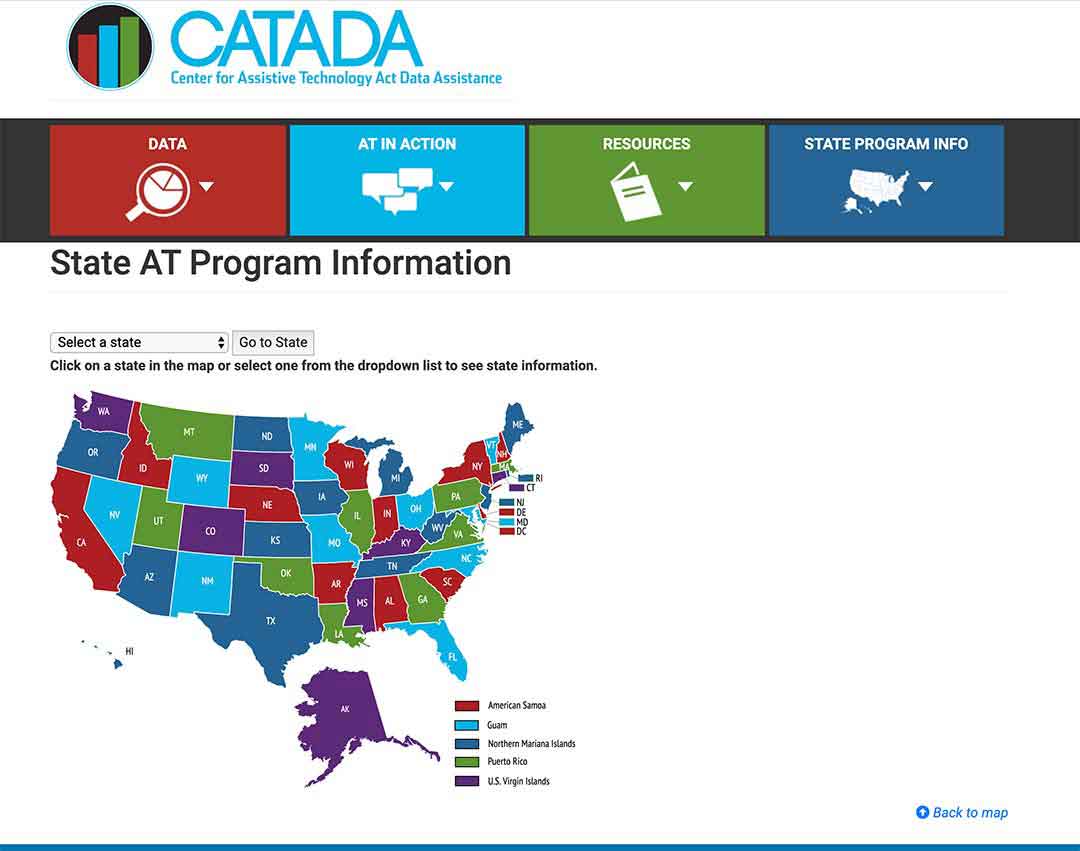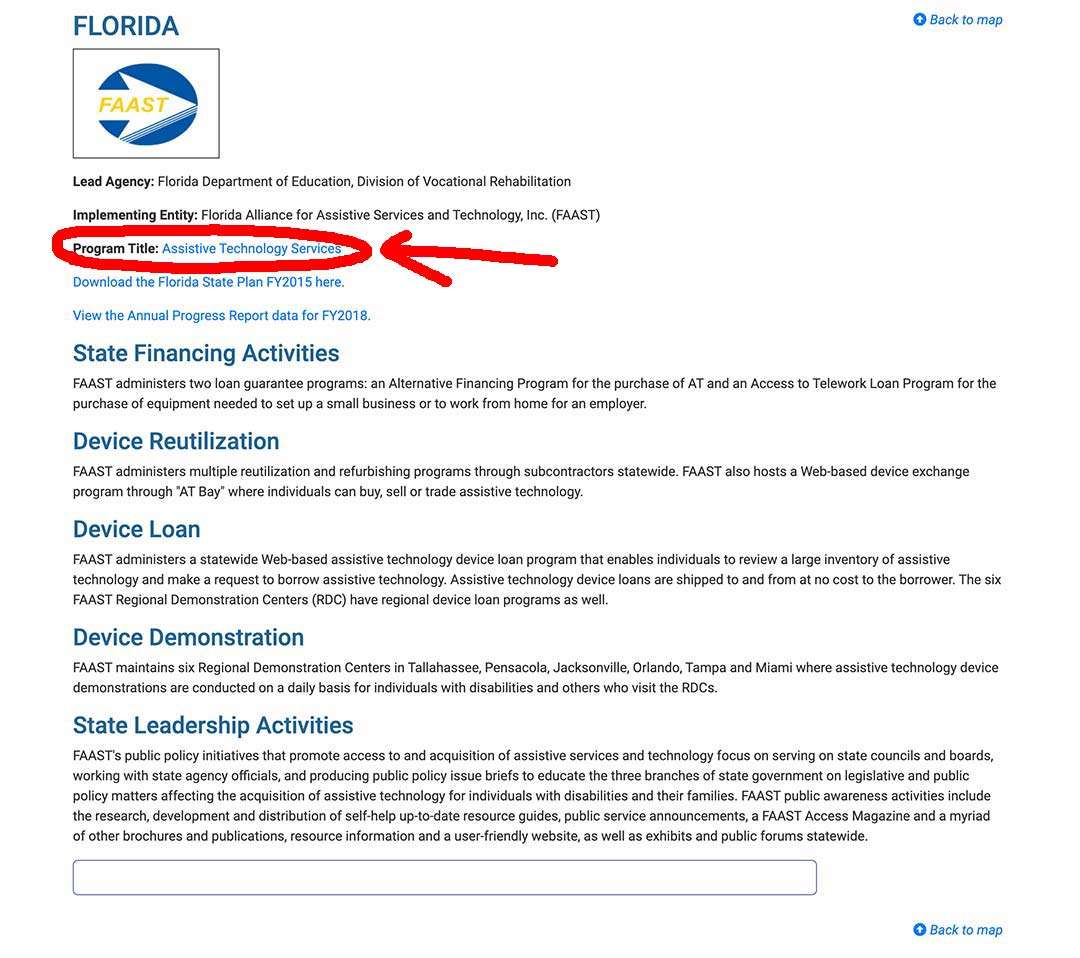Raised toilet seats will, for a lot of elderly people, become a pretty standard and wonderfully helpful, piece of equipment, if mobility, stiffness and balance start to become an issue in their lives. And in particular, if like my mom, your parent has a hip, or knee replacement, you will find out just how much of a relief it will be to them, both in terms of pain, and in worry/stress relief.
Medicare Part B considers raised toilet seats to be a “convenience item” and does not give coverage to them.
For medicare Part B to cover any medical equipment in the home it has to be “medically necessary”, as certified by a Medicare-enrolled physician.
Medicare does not consider raised toilet seats, risers or toilet safety frames as “medically necessary” and so does not cover them.
Risers are oval rings of plastic which are placed under your existing toilet seat raising it up – you have to remove your seat and place extra long bolts through the toilet block, riser on your toilet bowl rim and then your toilet seat on top of the riser.
Toilet safety frames are frames which are placed around the toilet, which the user can use to help them sit down and stand up from the toilet.
Contents Overview & Quicklinks
Does Medicare cover toilet seat risers ?
Medicare will cover bedside commodes
Medicare requirements for a bedside commode
Medicare qualifying diagnosis for a bedside commode ?
Does Medicare cover shower chairs ?
Does Medicare cover bathroom equipment ?
Does Medicare Advantage cover raised toilet seats ?
Learn more about bathroom safety equipment you can use
Will Medicare pay for bathroom modifications ?
What equipment will Medicare pay for ?
List of durable medical equipment typically covered by Medicare
Find a Medicare-approved supplier near me ?
List of durable medical equipment typically not covered by Medicare
How do you get your DME covered by Medicare ?
What pitfalls are there to avoid with Medicare ?
Once you have your prescription, what’s next ?
What happens if you are being treated in a Skilled Nursing Facility ?
Free assistance with understanding Medicare
Does Medicaid cover raised toilet seats ?
Looking for HCBS programs, waivers and 1915 waivers in your state
What can you do if your revenue is too high to qualify for Medicaid ?
How to proceed with purchasing DME on Medicaid and state funded programs ?
If you want to learn more about raised toilet seats in all their various types, I have an extensive article which outlines the types and how they fix to the toilet, “Types Of Raised Toilet Seats: What You Should Know Before You Buy”.
For larger individuals who may be worried about the solidity and weight
capacities of the various types of raised toilet seats, I have two articles –
“The Most Secure Raised Toilet Seat ? How To Make The Right Choice ? 50 Plus Examples”
The article covers the types of raised toilet seats and their solidity. In addition, it covers all the types of bedside commodes which you can use over a toilet as a raised toilet seat, with lots of examples of models you can find online, or in the stores. All the models are accompanied by their weight capacity, manufacturer and model number.
“A Complete Beginner’s Guide To Raised Toilet Seats For A Large Person”
This article has 75 examples of raised toilet seats with weight capacities ranging from 250lb all the way up to 1200lb. The difference between the two articles is that this article is specifically for larger individuals, who as well as wanting a strong seat will also probably be wanting a wider seat. All seats have their weight capacity and model number listed alongside the name and manufacturer of the seat.
Does Medicare cover toilet seat risers ?
Toilet seat risers are a specific attachment to the toilet to give you a raised toilet seat, and as such, Medicare part B does not give toilet seat risers coverage, on the same grounds as raised toilet seats – they are considered to be a comfort item.
But, just as with raised toilet seats in general, Medicare Part C, or Medicare Advantage Plans, may have benefits which cover bathroom equipment when it is needed to help in the treatment of chronic conditions.
You will have to examine the different Medicare Advantage Plans available to you.
Medicare will cover bedside commodes
Although Medicare does not cover raised toilet seats, it does cover bedside commodes, and these can be used over a toilet as a raised toilet seat.
Here is text from Medicare itself –
“Commode chairs
Part B (Medical Insurance) covers commode chairs as durable medical equipment(DME) when ordered by a doctor for use in your home if you can’t use a regular toilet.”
If you wish to see the complete original text, click here – Medicare.gov.
Medicare requirements for a bedside commode
Medicare will, typically, give 80% coverage to bedside commodes if –
- your case qualifies as “medically necessary” according to the Medicare guidelines for bedside commodes
- you have a signed prescription from a Medicare-enrolled physician
- rent or purchase the commode from a Medicare-approved supplier
- it is for use in the home
Medicare qualifying diagnosis for a bedside commode ?
The guidelines concerning a person who cannot use a regular toilet are such that a bedside commode will be covered if it is considered that you are medically unable to use the toilet, or get to the toilet without assistance.
This would be the case if –
- the beneficiary is confined to a single room (or bed bound), or
- the beneficiary is confined to one level of their home where there is no toilet facility, or
- the beneficiary is confined to their home and there are no toilet facilities in their home
I have an article all about how to use a bedside commode as a raised toilet seat, the different types of commodes you can use, and other jobs that a bedside commode can be used for – “Can a bedside commode be used over a toilet ?”
Does Medicare cover shower chairs ?
Medicare part B does not typically give shower chairs coverage, on the same grounds as raised toilet seats – they are considered to be a comfort item, and not “medically necessary”.
For any durable medical equipment to be covered by Medicare Part B it has to be “medically necessary”
There are cases where a shower chair may be covered because it is “medically necessary”, and a doctor has prescribed one after giving a particular diagnosis, but it is a complicated process.
If you want to –
- learn more about the process
- learn about the sample letter
- the diagnosis required
- and the Medicare guidelines
you can read all of that in my article “Does Medicare Cover Shower Chairs ?”.
Medicare Part C, or Medicare Advantage Plans may, though, have benefits which cover bathroom equipment, including shower chairs, when needed to help in the treatment of chronic conditions.
You will have to examine the different Medicare Advantage Plans available to you.
Does Medicare cover bathroom equipment ?
Original Medicare Part B will not cover any items which it considers to be just for comfort, as it does not consider them to be “medically necessary”.
To this end, Medicare Part B does not typically cover any of the following –
- grab bars
- raised toilet seats
- transfer seats
- bath lifts (these are seats which rise up and down within the bathtub)
- floor to ceiling poles
- shower chairs
- bath chairs
You are in luck in though, as Original Medicare Part B will cover walkers, commode chairs and crutches, as long as you can prove it is “medically necessary”.
Walkers are also advised to be used with raised toilet seats, to help with stability when sitting down, or getting up from the toilet, so as long as you can prove they are “medically necessary” you may be able to get these items.
Does Medicare Advantage cover raised toilet seats ?
For those of you who have Medicare Advantage plans, as of the fall of 2020, you may find new benefits for some bathroom safety equipment offered in plans.
The Center for Medicare and Medicaid Services is trying to widen the benefits that Medicare Advantage plans can offer, and some benefits for those with chronic conditions will be allowed.
What exactly will be offered won’t be known until the fall of 2020, but transport to shops, bathroom safety equipment and some forms of air purifiers, or air conditioning, for patients with certain chronic conditions have been mentioned.
Medicare contracts private companies to provide Medicare Advantage plans, and they must, by law, provide at least the same services and coverage as Original Medicare Parts A and B.
In some instances, they provide more coverage than Medicare.
Advantage Plan providers will require participants to use their network suppliers, and if they don’t, they may find themselves footing the whole bill for their DME.
Learn more about bathroom safety equipment you can use
If you want to know more about other pieces of safety equipment that you may need for your loved one in the bathroom, I have a long article with many bathroom safety tips and devices, that I have researched for my mom and dad. The article is a mix of over 50 safety tips and items that you may wish to look at. You can find it here.
Or, if you are learning how to help your parent with washing themselves, you may be interested in this article here, where I talk not only about bathing, but about how you, and your elderly parent, can get comfortable with the situation of helping, and of being helped. There’s a lot to learn.
Will Medicare pay for bathroom modifications ?
Original Medicare Part B does not typically cover bathroom modifications,
Almost all home modifications will not be covered by Medicare Part B.
Bathroom modifications are seen as “not primarily medical” in nature, and so cannot be covered by Medicare Part B
In some very rare instances that Medicare will cover the cost of a bathroom modification i.e. walk in bathtubs, because Medicare has been convinced that it really is a “medical necessity”, and that it may help a patient to improve or maintain their condition.
I have a specific and detailed article on Medicare Part Band bathroom modifications which lists all the alternative sources of funding which may help with alterations to the home for seniors –
- Medicaid programs
- HCBS waivers
- 1915 waivers
- state AT projects
- state online equipment exchanges with low cost or free equipment
- non-Medicaid financial assistance programs offering grants and loans
- USDA Rural Development Program
- Low Income Home Energy Assistance Program
- Weatherization Assistance Program
- Veterans Direct HCBS
- nonprofit organizations offering volunteers to do the building work
The article is “Will Medicare Pay For Bathroom Modifications ?”
As I said above, Medicare Advantage plans though, as of 2020 are being allowed to offer some new benefits which may include some bathroom safety equipment such as grab bars.
What equipment will Medicare pay for?
Medicare Part B covers certain durable medical equipment for use in the home, but only when it is prescribed as medically necessary.
Durable medical equipment is equipment which can withstand repeated use over a sustained period of time in the home.
For Medicare Part B, here are the basic criteria:
- Durable (it has to be capable of withstanding repeated use over a sustained period of time)
- It must be used for a medical reason, not just for comfort’s sake
- The equipment is not usually useful to an individual who is not sick
- You must be using it in your home
- It should have an expected lifetime of a minimum of 3 years
If equipment does not fulfill these criteria, you most likely will not be able to get it covered by Medicare.
Medicare’s own examples of durable medical equipment which it gives in its literature are item like –
- walkers
- wheelchairs
- hospital beds
- bedside commode chairs
List of durable medical equipment covered by Medicare
To qualify, you will need to have Original Medicare Parts A and B.
Air-Fluidized Bed
Alternating Pressure Pads and Mattresses
Audible/visible Signal Pacemaker Monitor
Pressure reducing beds, mattresses, and mattress overlays used to prevent bed sores
Bead Bed
Bed Side Rails
Bed Trapeze – covered if your loved one is confined to their bed and needs one to change position
Blood sugar monitors
Blood sugar (glucose) test strips
Canes (however, white canes for the blind aren’t covered)
Commode chairs
Continuous passive motion (CPM) machines
Continuous Positive Pressure Airway Devices, Accessories and Therapy
Crutches
Cushion Lift Power Seat
Defibrillators
Diabetic Strips
Digital Electronic Pacemaker
Electric Hospital beds
Gel Flotation Pads and Mattresses
Glucose Control Solutions
Heat Lamps
Hospital beds
Hydraulic Lift
Infusion pumps and supplies (when necessary to administer certain drugs)
IPPB Machines
Iron Lung
Lymphedema Pumps
Manual wheelchairs and power mobility devices (power wheelchairs or scooters needed for use inside the home)
Mattress
Medical Oxygen
Mobile Geriatric Chair
Motorized Wheelchairs
Muscle Stimulators
Nebulizers and some nebulizer medications (if reasonable and necessary)
Oxygen equipment and accessories
Patient lifts (a medical device used to lift you from a bed or wheelchair)
Oxygen Tents
Patient Lifts
Percussors
Postural Drainage Boards
Quad-Canes
Respirators
Rolling Chairs
Safety Roller
Seat Lift
Self-Contained Pacemaker Monitor
Sleep apnea and Continuous Positive Airway Pressure (CPAP) devices and accessories
Sitz Bath
Steam Packs
Suction pumps
Traction equipment
Ultraviolet Cabinet
Urinals (autoclavable hospital type)
Vaporizers
Ventilators
Walkers
Whirlpool Bath Equipment – if your loved one is home bound and the pool is medically needed. If your loved one isn’t home bound, Medicare will cover the cost of treatments in a hospital.
Find a Medicare-approved supplier near me
You can use this link to find a local DME supplier on Medicare.gov
List of durable medical equipment not covered by Medicare
Adult Diapers
Air Cleaners
Air Conditioners
Alcohol Swabs
Augmentative Communication Device
Bathroom Aids
Bathtub Lifts
Bathtub Seats
Bed Bath
Bed Boards
Bed Exit Alarms
Bed Sensor Pads
Bed Lifter
Beds – Lounge
Bed Wedges
Blood Glucose Analyzers
Braille Teaching Texts
Caregiver Paging Systems
Catheters – except those which are used for permanent medical conditions where the catheter is considered as a prosthetic
Chair Exit Alarms
Chair Sensor Pads
Communicator
Contact Lenses – Medicare helps pay for corrective lenses if you have cataract surgery to implant an intraocular lens
Dehumidifiers
Dentures
Diathermy Machines
Disposable Bed Protectors
Disposable Sheets
Door Exit Alarms
Easygrip Scissors
Elastic Stockings
Electrical Wound Stimulation
Electrostatic Machines
Elevators
Emesis Basins
Esophageal Dilators
Exercise Machines
Exit Alarm Mat
Eyeglasses – Medicare helps pay for corrective lenses if you have cataract surgery to implant an intraocular lens.
Fall Alarms
Fans
Fabric Supports
Fomentation Device
Grab Bars
Grabbers
Gauze
Hearing Aids
Heat and Massage Foam Cushion Pad
Heating and Cooling Plants
Home Modifications
Humidifiers – not room humidifiers
Incontinence Pads
Injectors (hypodermic jet pressure powered devices for Insulin injection)
Irrigating Kits
Insulin Pens
Massage Equipment
Motion Sensors
Motion Sensor Exit Systems with Pagers
Needles
Oscillating Beds
Over bed Tables
Paraffin Bath Units (if not Portable)
Parallel Bars
Portable Room Heaters
Portable Whirlpool Pumps
Preset Portable Oxygen Units
Pressure Leotards
Pressure Stockings
Pulse Tachometer
Pull String Alarms
Raised Toilet Seats
Ramps
Reading Machines
Reflectance Colorimeters
Sauna Baths
Special TV Close Caption
Speech Teaching Machines
Stair Lifts
Standing Table
Support Hose
Surgical Face Masks
Surgical Leggings
Syringes
Telephone Alert Systems
Television Assistive Listening Devices
Telephone Arms
Toilet Seats
Treadmill Exercisers
Walk in Bathtubs
Wheelchair Lifts
Whirlpool Pumps
White Canes
Wigs
How do you get your Medicare covered DME ?
For Medicare to cover durable medical equipment you, or your loved one, will need –
- to be enrolled in Medicare Part B
- a prescription signed by your Medicare-enrolled doctor certifying that the equipment is a medical necessity
- to buy the DME through a Medicare-enrolled supplier
What does Original Medicare part B consider to be at home ?
- living in your own home
- living in the family home
- living in the community, such as assisted living
A hospital, or nursing home, cannot qualify as a “home” for Medicare Part B, however they will be covered under Medicare Part A for any DME they need when in a nursing facility.
A long-term care facility, such as assisted living, can qualify as a “home” for Medicare part B.
What pitfalls are there to avoid with Medicare ?
So that you ensure that you are paying the least amount possible, your DME supplier must be a Medicare-enrolled “Participating” supplier who accepts “assignment”.
This ensures that they are paying the lowest possible price for the item – that being the Medicare-approved price.
What is the reason for this ?
Medicare enrolled suppliers are either
- Medicare Suppliers
or
- Medicare “Participating” Suppliers
Medicare “Participating” Suppliers have agreed to what is called “assignment” – they have accepted to only charge the Medicare-approved price for any DME.
And if my your supplier is not a “Participating” Supplier, what happens ?
A Medicare-enrolled supplier who is not a “Participating” Supplier –
- has agreed with Medicare to accept payment from Medicare for DME at the Medicare-approved price
- but can sell the DME for up to 15% more, to you
This means –
- Medicare will pay the supplier their 80% of the Medicare-approved price for your DME
- and you end up paying your 20% co-pay of the Medicare-approved price for the item + the difference between the Medicare-approved price, and the price the supplier is selling the equipment at
- And you will have to pay your annual Medicare deductible if it applies
So make sure you use a Medicare-enrolled “Participating” Supplier, and always asks if the supplier accepts “assignment”.
Once you have your prescription, what’s next ?
You will need to pay your annual deductible (if this hasn’t already been met) along with a co-payment equal to 20% of the Medicare-approved price of the equipment being purchased. Medicare is then responsible for covering the remaining 80% of the Medicare-approved price.
With less expensive equipment Medicare will usually purchase the items outright, but with substantial purchases such as hospital beds, it is more common that they will rent a hospital bed on a monthly basis.
If your equipment is rented by Medicare, from a Medicare-approved “Participating” supplier who accepts “assignment”, you will be responsible for a monthly co-payment of 20% of the Medicare-approved rental price.
What happens if you are being treated in a Skilled Nursing Facility ?
If you are receiving treatment in a Skilled Nursing Facility, or hospital, you will be covered by Medicare Part A (Hospital Insurance). The facility is required by law to take care of supplying any DME needed for up to 100 days.
Free assistance with understanding Medicare
SHIP – State Health Insurance Assistance Programs –
Your SHIP offers free guidance about Medicare, Medicaid and Medigap.
If you want to find out more, I have a short article explaining how to find your SHIP – “Free Help Understanding Medicare And Medicaid ? Here’s Where You Get It’.
Does Medicaid cover raised toilet seats ?
Medicaid is both federally and state funded, and there are certain programs on which it is easier to get durable medical equipment of all types. Items such as raised toilet seats may be covered on certain programs and waivers.
All states have the option as to what can be done with Medicaid, in terms of customizing its programs to some degree.
Medicaid frequently agrees to a state’s request to waive eligibility requirements for its different programs, in order to broaden their scope and reach.
The programs on which Medicaid agrees to waive requirements are called “waivers”.
Health Care in the home – Medicaid and state programs
Health Care programs for in the home are called “Home and Community Based Services” (HCBS), “Waivers” or “1915 Waivers”.
The programs have been designed so that the beneficiaries can maintain their independence in their homes, and the community.
The programs and waivers will cover “home medical equipment” for the participants, and sometimes they will cover up to 100% of the cost.
To see if you are eligible for any programs, contact your State Medicaid Agency here.
For further information on HCBS programs, or waivers, check here on Medicare.gov –
https://www.medicaid.gov/medicaid/hcbs/authorities/index.html
The programs use the term “home” for the beneficiaries to mean –
- their own home
- their family home
- a group home
- an assisted living facility
- a custodial care facility
Certain Medicaid and state, waivers and programs, allow for a wider range of DME for the home, than others
Consumer or Self Direction Programs
There are HCBS programs, or waivers, which allow for what has been named Consumer Direction/ Self Direction.
A participant in the program is designated funding, or a specific budget, for living in their home.
The participant, with the help of a financial planner, will manage the use of the funds across their specific needs.
Durable medical equipment can be purchased as part of their living needs.
Items such as bathtubs, grab bars or shower chairs, which do not qualify as durable medical equipment under Medicare, if considered medically necessary, and within the beneficiaries allotted budget, may be purchased on some of these programs or waivers.
To find out more about Medicaid Self Direction, click here.
Money Follows The Person
Medicaid originally developed a program called Money Follows The Person to help the elderly to make the transition from nursing homes back to their own homes, and to reduce the numbers of elderly in state nursing homes.
Now, Medicaid funds the individual states to set up their own Money Follows The Person programs – this can be designing a whole new program from the ground up, or taking an existing program and adapting it.
Durable medical equipment which is considered to be necessary for the beneficiaries to relocate to their homes is bought by the program.
What is considered durable medical equipment, is again less restricted than that covered by Medicare.
Looking for HCBS programs, waivers and 1915 waivers in your state
To find the HCBS Waivers, 1915 Waivers, HCBS Programs and the Money Follows The Person Programs for seniors which are available in your state, you can just check my article, which has a list of what is available in each state, links to the different program websites, and also lists all the PACE programs for All-inclusive Care for The Elderly – “Medicaid Home and Community Based Services Waivers and Programs For Seniors Listed By State”.
What can you do if your revenue is too high to qualify for Medicaid ?
The Spend Down Program
Spend Down programs, are Medicaid programs devised to reduce a person’s income, or income + asset level, so that they may become eligible for Medicaid.
Spend Down uses one of two methods, depending on the case –
- Income Spend Down
- Asset Spend Down
To find out more about Spend Down, you can read may article which outlines qualification and method – “What is Spend Down ?”
How to proceed with purchasing DME on Medicaid and state funded programs ?
Step 1
– get the doctor, or therapist, to provide a medical justification letter, stating that the equipment desired is medically necessary.
Step 2
– contact a DME supplier, who is Medicaid approved, and give them the medical justification letter from the doctor, or therapist.
Step 3
– the supplier should fill out a Prior Approval Application.
Step 4
– the document goes to the Medicaid state office where the purchase is either approved, or denied.
Step 5
– if the purchase is unsuccessful, you will be notified as to the reasons why, and how to appeal the decision.
Step 6
– if the purchase is approved, you will receive the item.
To find your State Medicaid State Agency
If you want to discuss things, or to email someone, you can contact your state Medicaid Agency here.
Step 1 –
Click the link to Medicaid.gov and look for the section that I have outlined in red.

Step 2 –
Select your state and click on the button they have marked “GO” – it will take you to your State Medicaid Agency with all their contact info.

State Funding Assistance For the Elderly
Assistive Technology Programs
State Assistive Technology Programs are present in all states thanks to a national grant.
The program has been designed to improve access to assistive devices in the home, primarily for the elderly and the disabled.
Your State Assistive Technology Programs typically will provide the following services –
- an online equipment exchange for state residents on which you can register and participate – donating, selling and buying used devices and equipment
- a main program website which outlines the program’s services, contacts, events, and answers specific questions individuals may have
- reuse, recycling and refurbishment programs and centers, often run with community partners, to provide free, or extremely low cost, equipment for the disabled and the elderly
- long and short term loan closets, or both
Your state Assistive Technology Program will, if you contact them, let you know when specific equipment becomes available.
All the information is to be found on the State Assistive Technology Program websites, and I have added a link below.
But, just to say if you have a problem navigating your state’s website, and it can be a bit difficult with some, go to my article about donating equipment, and I have listed the different equipment exchanges and program centers in as many states as I could find – “Where can I donate a shower chair ?” – the part you will want is the list of states in the second half of the article.
To see what projects are in your state, click here.
Follow the steps below to see the projects in your state
Step 1/
Pick your state on the map or the drop-down menu, and click on “Go to state”
– I chose Florida for this example

Step 2/
Click on the link “Program Title” – for my example, I outlined it in red.

Step 3/
The AT Program state website will come up, and you can register, or use their contact info.

State Financial Assistance Programs
State Financial Assistance Programs don’t exist in all states, but where they do, they provide loans and grants, or both, to help the elderly and disabled populations to maintain an independent living in their own homes.
The programs will help with purchasing Assistive Technology devices, medical equipment, and if it is needed, so the participant can remain in their home, remodeling of rooms, and adding elements such as wheelchair ramps.
Local Area Agencies on Aging will be able to tell you if your state has a program, and if you can apply.
How to get a raised toilet seat covered as a Veteran
The Department of Veterans’ Affairs has grants, programs, forms of financial assistance and pensions which will help to cover the cost of DME for veterans.
You, or your parent, can find out about their local VA Medical Centers, Clinics and offices in each state at this link here.
Below are just some different forms of assistance available if your parent is a veteran –
- Grants for remodeling homes due to disabilities inflicted during military service
- Veterans Direct HCBS where the beneficiary allocates the budget to their specific needs
- Veterans’ Pensions – certain pensions will allow for the purchase of equipment that veterans need for their homes
All the above will pay for bathroom safety equipment, including raised toilet seats.
I’m Gareth, the author and owner of Looking After Mom and Dad.com
I have been a caregiver for over 10 yrs and share all my tips here.

